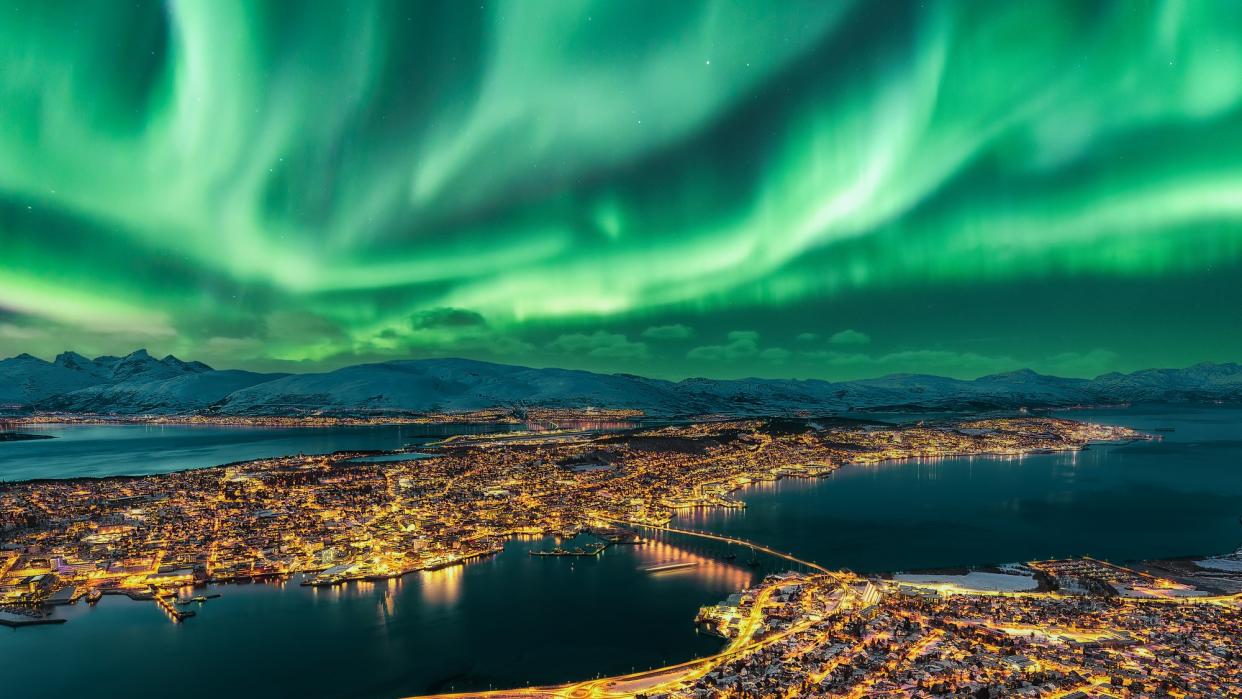Places that are already seeing a boost in tourism due to climate change

Climate change is causing an increase in extreme weather and temperatures. Because of this, some popular tourist destinations are seeing fewer visitors as the weather in these regions becomes undesirable. However, some places are experiencing the opposite effect: a boost in tourism with the warming temperatures, especially places that tend to have cold weather typically. Weather conditions at these destinations are less extreme in the summer and provide reliable cold-weather experiences on an ever-warming planet. Researchers predicted this outcome back in 2006, saying "climate change would shift patterns of tourism towards higher altitudes and latitudes," and "tourism may double in colder countries and fall by 20 percent in warmer countries." Here are a few of the places seeing an increase in tourism due to the globe's shifting climate.
Scandinavia
While Southern Europe, namely the Mediterranean region, has regularly attracted tourist attention, Denmark, Norway, Sweden and Finland have seen a marked increase in visitors during the summer months. These Scandinavian countries' northerly location has them avoiding the scorching temperatures that some European countries, like Italy, have experienced over the last few years. "As travelers look for alternatives, they are discovering other countries and regions that offer great art, culture, food and wine, including the Scandinavian countries that also offer the benefit of cooler temperatures," Helen Giontsis, president of Kensington Tours, told Travel Weekly.
"While Scandinavian countries are no exception to rising global temperatures, tourists are now flocking to places like Norway, Denmark and Finland in pursuit of their comparatively cooler weather and a break from the heat," explained Inside Hook. "We see that many visitors to Scandinavia look at weather as a vital part of their journey," Robert Holan, general manager at The Thief hotel in Oslo, told the outlet. The region will also likely see an increase in winter tourism as truly cold winters become rarer, making countries and regions that can still host winter sports and activities all the more precious.
Iceland
In a similar vein to its eastern neighbors, Iceland has seen an increase in tourism. The country saw a 17% increase in visitors from June 2022 to June 2023, according to the Iceland Review. "Iceland has been booming since before the pandemic, and so the growth isn't as dramatic," said Tom Smith, vice president of sales and marketing of North America for Intrepid, to Travel Weekly. This ramped-up tourism, however, is a double-edged sword.
"Tourism has really grown exponentially in Iceland in the last decade, and that obviously is not just creating effects on the climate," Prime Minister Katrin Jakobsdottir, told Bloomberg. "It's also because most of our guests who are coming to us are visiting the unspoiled nature, and obviously it creates a pressure." In response, Iceland is planning to implement a tourist tax, "intended to expand taxation to cover passengers on cruise ships alongside hotels, recognizing the impact on our seas as well as land," a spokesperson for Iceland's Ministry of Finance and Economic Affairs told USA Today.
Poland
Poland is expected to see a rise in tourism as well, in no small part because of the country's 480 miles of coastlines and sandy beaches. "Poland's Baltic coast has long been a popular summer destination among Poles themselves, but in recent years it has drawn a growing number of international tourists as well," said Notes from Poland. The country’s capital, Warsaw, was also crowned Europe's Top Destination 2023 by European Best Destinations.
"A holiday hotspot should be defined by its attractiveness to tourists, not by annual heat waves that give holidaymakers strokes and cause wildfires every year," TVP World said. Another popular destination, Greece, also known for its coastlines, experienced deadly wildfires over the summer which prompted vacationgoers to explore other options.
Canada
Warmer temperatures could increase Canada's winter tourism because the country's cold winters will be a comparative rarity for the world. Climate change's "dire circumstances could turn Canada — with its entrenched reputation as the Great White North — into a winter tourism destination," The Star noted. In the coming years, people will need to venture further and further north to experience cold weather. "Ice-fishing, Indigenous tourist experiences, dog sledding and northern lights viewing could be major attractions — in Saskatchewan alone."
But this increased winter tourism may also cause harm. "There are certain tourism activities that seem to be increasing because of climate change that unfortunately, and ironically, are the greatest contributors to climate change," Micah Hewer, professor at the University of Toronto's department of environmental studies, told The Weather Network. Those deleterious influences include activities like Arctic cruises and long-haul flights.

